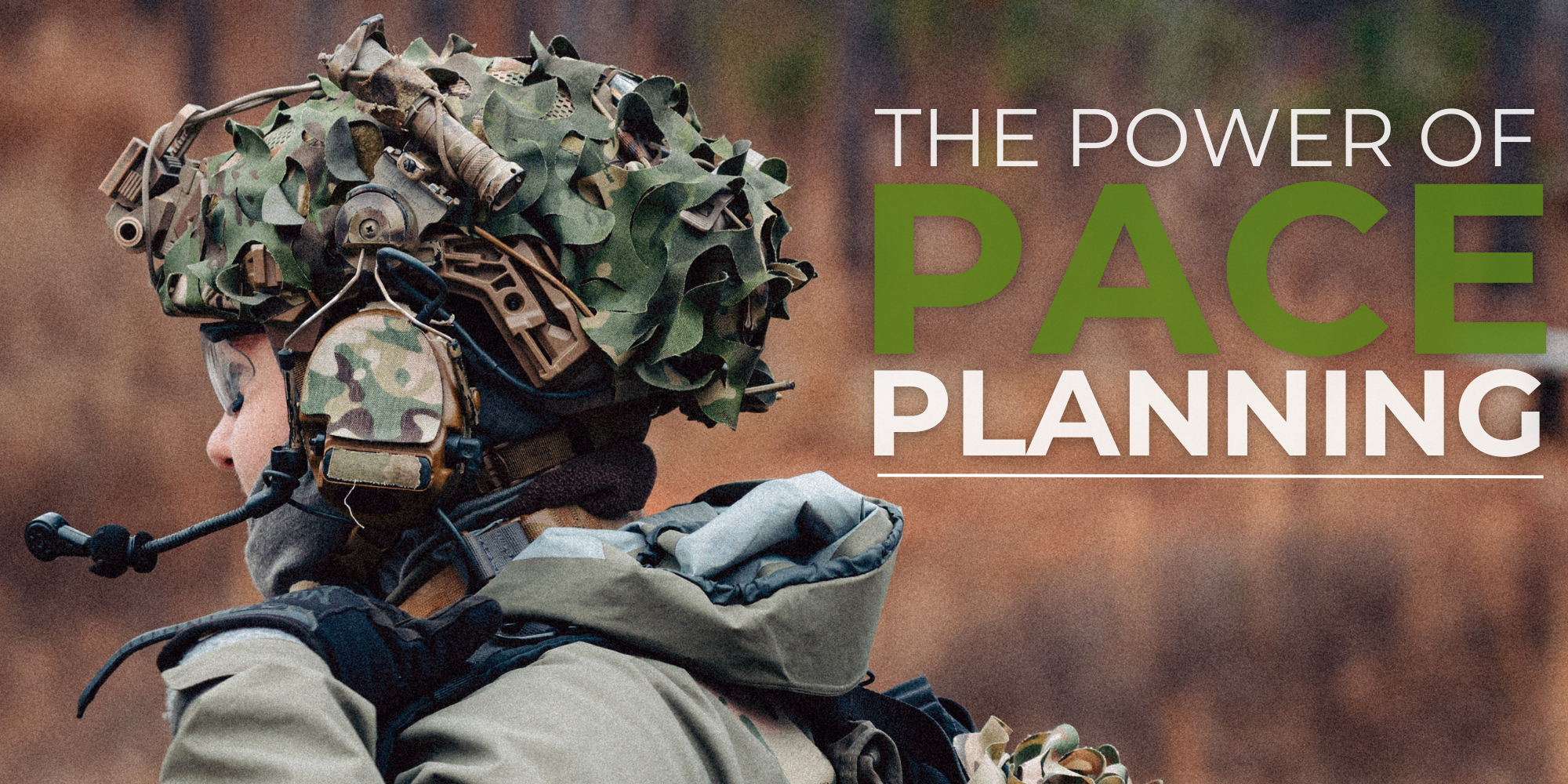Cart
Your cart is empty
Looks like you haven’t added anything yet, browse our sale below!
Continue Shopping
When you hear the phrase "PACE planning," you likely think of radios. This is understandable, as it's the most common sphere where PACE planning is utilized. However, PACE planning extends far beyond the world of radios and has proven to be a valuable approach in various domains. PACE, which stands for Primary, Alternate, Contingency, and Emergency, is a planning framework that ensures preparedness and flexibility in critical situations. It originated from military operations but has found its application in any aspect of a prepared citizen’s life. PACE planning is centered around the idea of developing a plan that can survive equipment failure and unforeseen circumstances. With the sliding scale of infrastructure available to be employed at the top end and rudimentary functionality at the other end. There is never a “right” answer, but there are definitely some wrong ones. Building an effective PACE plan is a challenging task. In a comms example, the key to a good PACE plan is to establish redundancy among the communications capabilities available, so that some means of communication is always available. The burden is on you, the planner, to ensure that your PACE plan meets the following criteria.
• Feasible. Have enough working systems and trained users to implement each step of the PACE plan forboth transmitting and receiving users • Acceptable. Setting up a redundant capability must not interfere with the bigger operation or other continuity may be occurring simultaneously. • Suitable. Redundant capabilities must have the capacity to meet operational requirements, like • Distinguishable. Redundant communications cannot rely on an impacted method. This is where we atart to see some “wrong” answers. For example, if your UV-5R cannot make voice comms, using APRS over your analog radio as the Alternate is a failure to have a real alternate. If VHF radio communications are degraded or denied, the next step in the PACE plan should use a different transmission medium altogether. • Complete. The PACE plan should outline each means of communication, and triggers for execution
All of this planning takes preparedness a step further by anticipating potential risks and developing specific strategies to address them. It involves identifying possible scenarios and creating plans tailored to each situation. By considering various contingencies in advance, organizations and individuals can respond effectively to unforeseen circumstances. This proactive approach minimizes the impact of unexpected events and allows for timely and efficient decision-making, and also opens up leadership to developing good situations to be training as a team.
Emergency planning focuses on worst-case scenarios. It involves preparing for extreme situations that require immediate and decisive action. Emergency plans outline clear steps to be taken to mitigate risks and ensure the safety and well-being of individuals involved. However, having a well-thought-out emergency plan in place can make a critical difference in saving lives and minimizing damage.
The versatility of PACE planning lies in its adaptability to different contexts. Whether it's managing a complex project, responding to a natural disaster, or striving to achieve personal goals, incorporating PACE planning principles can enhance preparedness, agility, and resilience. It provides a structured approach that allows for effective decision-making and ensures that resources are allocated efficiently.
So, the next time you hear the phrase "PACE planning," remember that it encompasses much more than just radios. It represents a powerful framework that empowers individuals and organizations to navigate uncertainties and achieve success in a dynamic world. By embracing PACE planning, one can be better prepared to tackle challenges and seize opportunities, leading to improved outcomes and overall success.
Looks like you haven’t added anything yet, browse our sale below!
Continue Shopping
Leave a comment
This site is protected by hCaptcha and the hCaptcha Privacy Policy and Terms of Service apply.